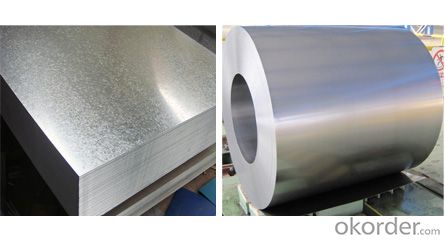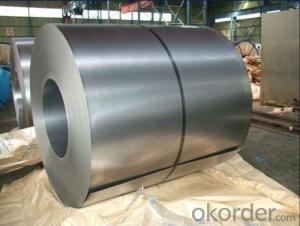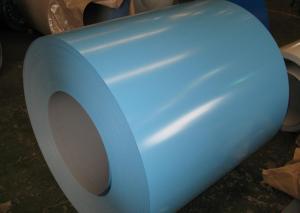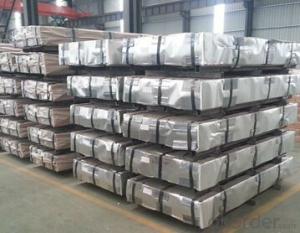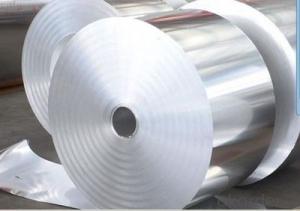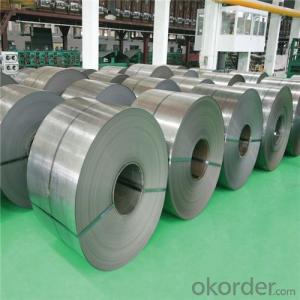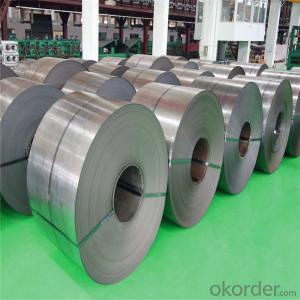Zinc Coated Galvanized Treatment Steel Coil Z275
- Loading Port:
- Qingdao
- Payment Terms:
- TT or LC
- Min Order Qty:
- 25 m.t.
- Supply Capability:
- 10000 m.t./month
OKorder Service Pledge
Quality Product, Order Online Tracking, Timely Delivery
OKorder Financial Service
Credit Rating, Credit Services, Credit Purchasing
You Might Also Like
Zinc Coated Galvanized Treatment Steel Coil Z275
Main Structure of Zinc Coated Steel Coil
1.Thickness:0.14-2.5mm
2.Width:600-1250mm
3.Grade:SGCC,JISG3302,DX51D,Q235
4.Zinc Coating:60-275g/m2
5.Coil ID:508mm/610mm
6.Coil weight:3-8ton
Specification for Zinc Coated Steel Coil
| Commodity | China Manufacture High quality Galvanized Steel Coil |
| Techinical Standard: | JIS 3302 / ASTM A653 / EN10143 |
| Grade | DX51D / DX52D/ DX53D/ S250,280,320GD |
| Types: | Commercial / Drawing / Deep Drawing / Structural quality |
| Width | 500/650/726/820/914/1000/1200/1219/1220/1250mm |
| Thickness | 0.12-2.5mm (0.14-0.5mm is the most advantage thickness) |
| Type of coating: | galvanized |
| Zinc coating | Z60-275g/m2 |
| Surface treament | chromed / skinpass/ oiled/slightly oiled/ dry/ anti-fingerprint |
| Surface structure: | zero spangle / minimized spangle / regular spangle/ big spangle |
| ID coil | 508mm or 610mm |
| Coil weight | 3-8 MT per coil |
| Package: | Properly packed for ocean freight exportation in 20'containers |
| Application: | Industrial panels, roofing and siding for painting |
Application of Zinc Coated Steel Coil
Construction usage
Storage usage like steel silo, grain storage silo
Building material
Industrial using
Picture:
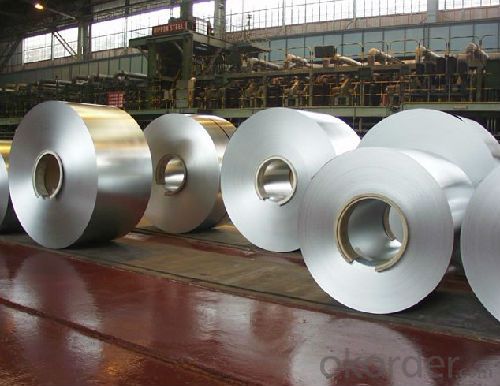
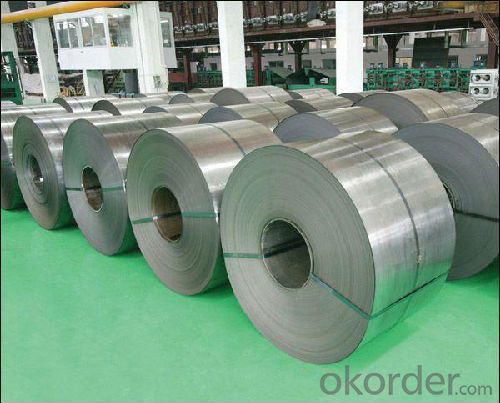

- Q: How are steel coils inspected for surface cleanliness during processing?
- Steel coils are inspected for surface cleanliness during processing using various methods such as visual inspection, magnetic particle inspection, eddy current testing, and ultrasonic testing. These techniques help identify any contaminants, defects, or imperfections on the surface of the coils, ensuring that the final product meets the required quality standards.
- Q: What are the different types of steel coil surface treatments for corrosion resistance?
- To enhance corrosion resistance, different methods are utilized for treating the surface of steel coils. These treatments create a protective layer that prolongs the lifespan of the steel and prevents corrosion. Some commonly used treatments for corrosion resistance include: 1. Galvanizing: Widely recognized as an effective method, galvanizing involves applying a layer of zinc to the steel coil's surface. The zinc acts as a sacrificial anode, corroding before the steel, thus safeguarding it against rust and corrosion. 2. Chromate conversion coating: This treatment entails applying a chromate-based solution to the steel coil's surface. The chromate forms a thin film that serves as a protective barrier against corrosion. Moreover, it improves the adherence of paint or other coatings that may be applied subsequently. 3. Phosphating: Phosphating is a process where a phosphate coating is added to the steel coil. This coating establishes excellent corrosion resistance by chemically bonding with the steel surface. It also enhances the adherence of subsequent coatings or paints. 4. Organic coatings: These coatings comprise paint or epoxy and are applied to the steel coil to create a barrier between the steel and its surroundings. They offer corrosion resistance and enhance aesthetic appeal. The selection of organic coating depends on the specific application and the desired level of corrosion protection. 5. Zinc-rich paint: Similar to galvanizing, zinc-rich paint contains a high concentration of zinc particles. When applied to the steel coil, these particles provide sacrificial protection, preventing corrosion. This coating is commonly employed in harsh environments or for steel coils exposed to frequent moisture or saltwater. It is important to consider various factors such as the application, environment, budget, and required level of corrosion resistance when choosing a surface treatment. Consulting with a steel coil manufacturer or corrosion specialist is advisable to determine the most suitable treatment for a specific situation.
- Q: Guitar?I have a steel- string, but prefer nylon.:)
- Steel string 4 playing wid plectrum, nylon 4 finger style playing
- Q: Hello people.Me and the life mate have been working on a fantasy book together and we are currently in the process of outlining the cultures. The culture of our antagonists' is a sort of woodland tribal/celtic[ish] deal and they are very nature oriented. Being a detail freak and wanting to have some real world credibility in the story, I am trying to decide how they produce steel. I want steel to be an important part of the culture, but a thing that is in limited supply. I also do not want there to be a large amount of resources committeded to mining or processing iron ore for steel. So does anyone have any real world ideas explaining how the people can produce steel without using underground mining operations, large processing facilities, and without raping the land?All help and ideas are appreciated
- Well, steel is just modified iron, so you're going to have to start with acquiring the iron first. For that, you're most likely going to be using some sort of underground mining somewhere - either they do that themselves, or they purchase the iron elsewhere. Assuming you're not dealing with meteoric iron (which is possible, but pretty uncommon), or iron sands (not likely in a woodland area), then unless you're dealing with a rocky outcropping with iron veins out in the open, I'm pretty sure there needs to be somebody doing some digging. That said, it doesn't need to be a full raping of the land scenario. A couple of minor mines, some small-scale smelting operations, and somebody knowing the secret of making steel, and it could give you small amounts of steel without making an ecological disaster.
- Q: What is the typical weight of a steel coil?
- The typical weight of a steel coil can vary depending on several factors such as the type of steel, the thickness, and the dimensions of the coil. However, on average, steel coils can range from a few hundred kilograms to several tonnes.
- Q: I installed it, added it in F3 launcher and then after one minute of walking in wasteland I get a signal that Broken steel was added and that my level of caps was raised by 30. However after this message no quest is added. I played all 4 exp. packs and I had no problem at all, each time a new quest was added. So whats up with this Broken steel. Btw, I completed the entire game F3.
- Yeah you awaken after the ending cutscene in case you have it put in and then yet another quest line is given to you and you will circulate on your merry way doing in spite of you experience like.
- Q: What are the common handling defects in steel coils?
- There are several common handling defects that can occur in steel coils during transportation and storage. These defects can impact the quality and integrity of the coils, leading to potential issues down the line. Some of the most common handling defects in steel coils include: 1. Edge damage: This occurs when the edges of the coil are bumped or scraped, resulting in dents, scratches, or even tears. Edge damage can weaken the structural integrity of the coil and make it more susceptible to further damage. 2. Core damage: The core of a steel coil is crucial for maintaining its shape and stability. However, mishandling can cause the core to become crushed or deformed, which can lead to coil collapse or distortion. 3. Coil slippage: When coils are not securely strapped or stacked, they can shift or slide during transportation. This can result in coil slippage, leading to misalignment, damage to the outer layers, or even complete coil failure. 4. Abrasion: Steel coils can be subject to abrasion if they come into contact with rough surfaces or other objects during handling. This can cause the protective coating or paint on the coil to wear off, exposing the steel to potential corrosion. 5. Moisture damage: Steel coils are susceptible to moisture damage, especially if they are not properly sealed or protected. Exposure to moisture can lead to rust formation, which can compromise the structural integrity of the coil and affect its overall quality. 6. Overloading: Overloading a truck or storage area with steel coils can cause excessive pressure and stress on the coils, leading to deformation, bending, or even coil collapse. It is crucial to adhere to weight limits and proper stacking procedures to prevent overloading. 7. Improper lifting: When lifting steel coils, it is important to use appropriate lifting equipment and techniques. Failure to do so can result in coil damage, such as distortion or bending, as well as potential injuries to workers. To mitigate these handling defects, it is crucial to follow proper handling and storage procedures for steel coils. This includes using suitable lifting equipment, securing the coils during transportation, avoiding overloading, and ensuring proper protection against moisture and abrasion. Regular inspections and maintenance can also help identify and address any potential defects or issues before they worsen.
- Q: a picture of the atomic structure of carbon steel
- This is actually a quite complex question... The atomic arrangement in steels can be controlled over a pretty wide range of different structures. This is really the fundamental reason why steel is such a commonly used material. The different atomic structures produce different physical properties so metallurgists have developed many different processes to control the atomic structure to get the properties they want. One simple answer is that Fe is BCC, body centered cubic at room temperature at equilibrium conditions. When you heat Fe up, it transforms to FCC, face centered cubic. If you continue heating Fe, it goes back to BCC, then it melts. The addition of C makes these structures (and the transformation temperatures) different. Deviating from equilibrium conditions by, for example, cooling very quickly (quenching) creates different atomic structures (one of the most important is known as martensite). Depending on how much C is in the steel, you can also have two different atomic structures (two different phases) present in equilibirum, for example, pearlite which is a mix of alpha Fe (BCC) and iron carbide Fe3C (orthorombic crystal structure). So... you need to think a little more about exactly what you want a picture of. I hope this helps
- Q: How are steel coils inspected for bendability using bend testers?
- Steel coils are inspected for bendability using bend testers by subjecting them to a controlled bending process. The bend tester applies a specific amount of force to the coil, gradually bending it to determine its flexibility and resistance to bending. This helps assess the quality and suitability of the steel coil for various applications, such as manufacturing processes that require bendable materials.
- Q: How are defects in steel coils detected and resolved?
- Defects in steel coils are typically detected through visual inspections, as well as non-destructive testing techniques such as ultrasonic testing and magnetic particle inspection. Once identified, the defects can be resolved through various methods including grinding, welding, or cutting and replacing the affected area. The specific resolution method depends on the nature and severity of the defect.
Send your message to us
Zinc Coated Galvanized Treatment Steel Coil Z275
- Loading Port:
- Qingdao
- Payment Terms:
- TT or LC
- Min Order Qty:
- 25 m.t.
- Supply Capability:
- 10000 m.t./month
OKorder Service Pledge
Quality Product, Order Online Tracking, Timely Delivery
OKorder Financial Service
Credit Rating, Credit Services, Credit Purchasing
Similar products
Hot products
Hot Searches
Related keywords



